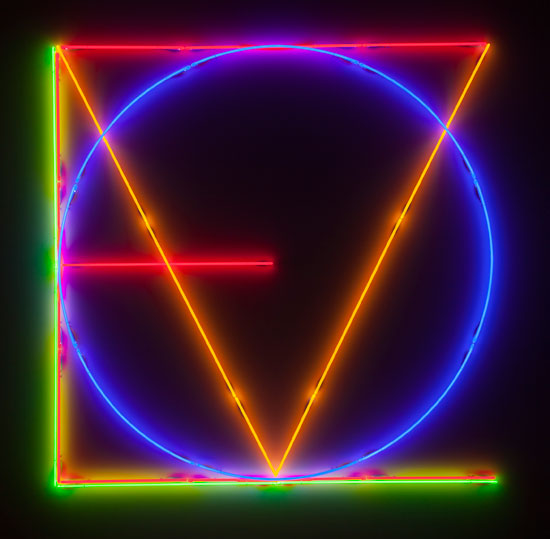Ever since he made his first neon piece, Alfabetofonetico in 1967, Maurizio Nannucci has spelt out numerous words, concepts and phrases with visual means. Alongside Jenny Holzer, Joseph Kosuth, Mario Merz and Bruce Nauman, he is among the most celebrated artists who bring together the elements of light, colour and writing, or indeed language, in their works. Unlike many younger light artists, who use the more modestly priced and durable LEDs, which also require less servicing, the Italian artist continues to swear by neon, which in his opinion has a much more vibrant chromaticity.
While any number of practitioners of concrete poetry disregard the word per se as the conveyor of meaning, Maurizio Nannucci, who operates in part with linguistic methods, plays with various levels of meaning that mutually interlock. His means for this may at first seem familiar to the viewer, who knows them from neon adverts in urban space. But at that moment he is no longer confronting them in dark cavernous city streets, looking at from below, but on eye level in an artificially darkened exhibition space.
In Nannucci’s piece LOVE, which he has done in several versions, the fact already that the outsized format of the four letters that have been placed together to produce a single square, along with the brash blazing light of the superimposed coloured strips, seriously hampers their legibility. Even before the individual characters and their possible combinations have been discerned as a meaningful whole, three basic geometrical forms can be identified: circle, triangle and square (open on one side). After slightly longer viewing, one can also make out the four letters L, O, V, E, each in its own colour. It is uncertain though whether LOVE is meant as a noun, a verb, or perhaps even in the imperative, as a command, which is also conceivable given the monumental format of the glowing letters. The divergence between sign and signified could scarcely be greater than in the case of a scintillating concept like “love”. Nannucci’s work can also be read in the metaphorical sense: this is how love can radiate, it can be recognised and understood – or perhaps not. (Clemens Ottnad)
Maurizio Nannucci
1939 born in Florence
Lives and works in Florence and southern Germany


